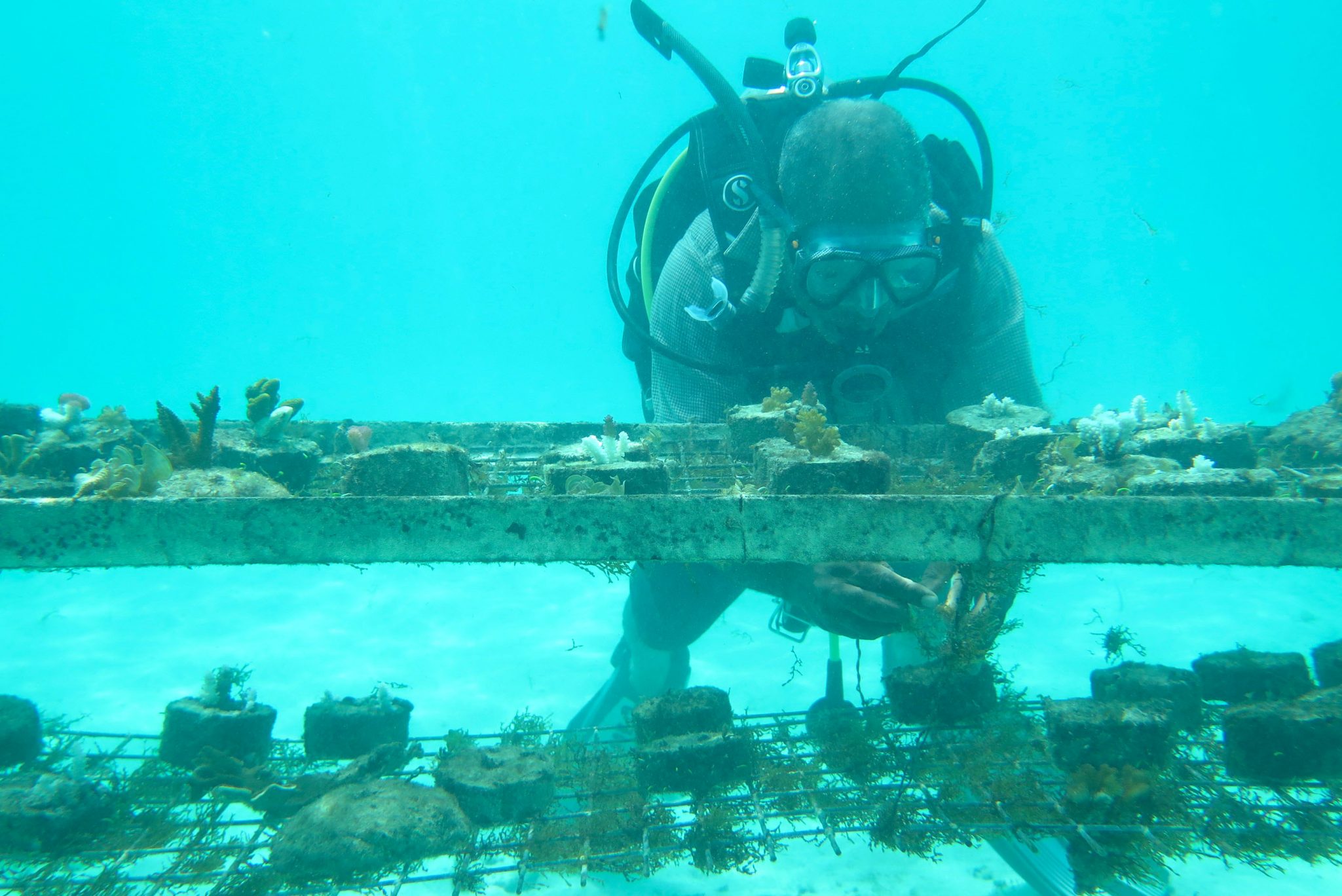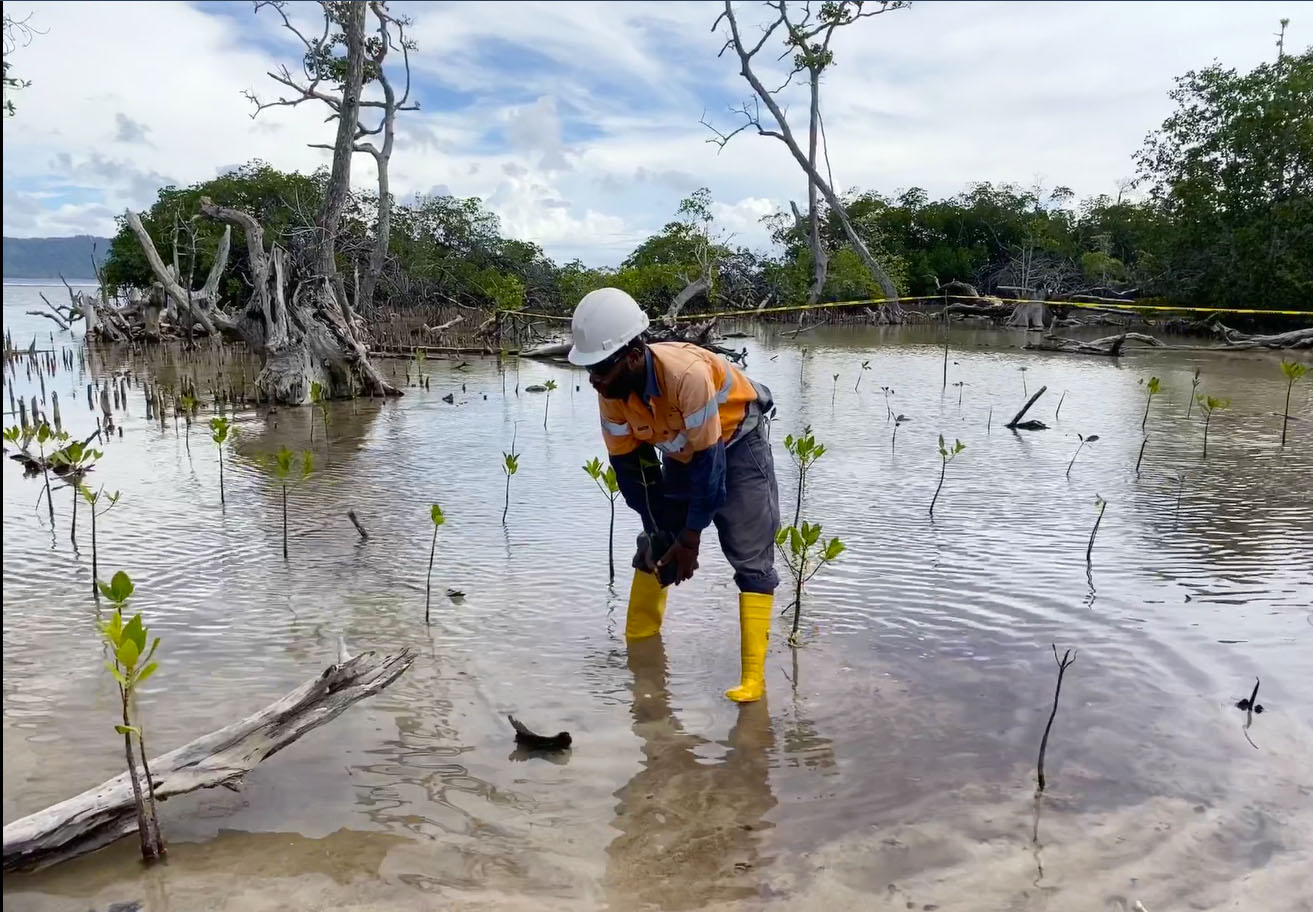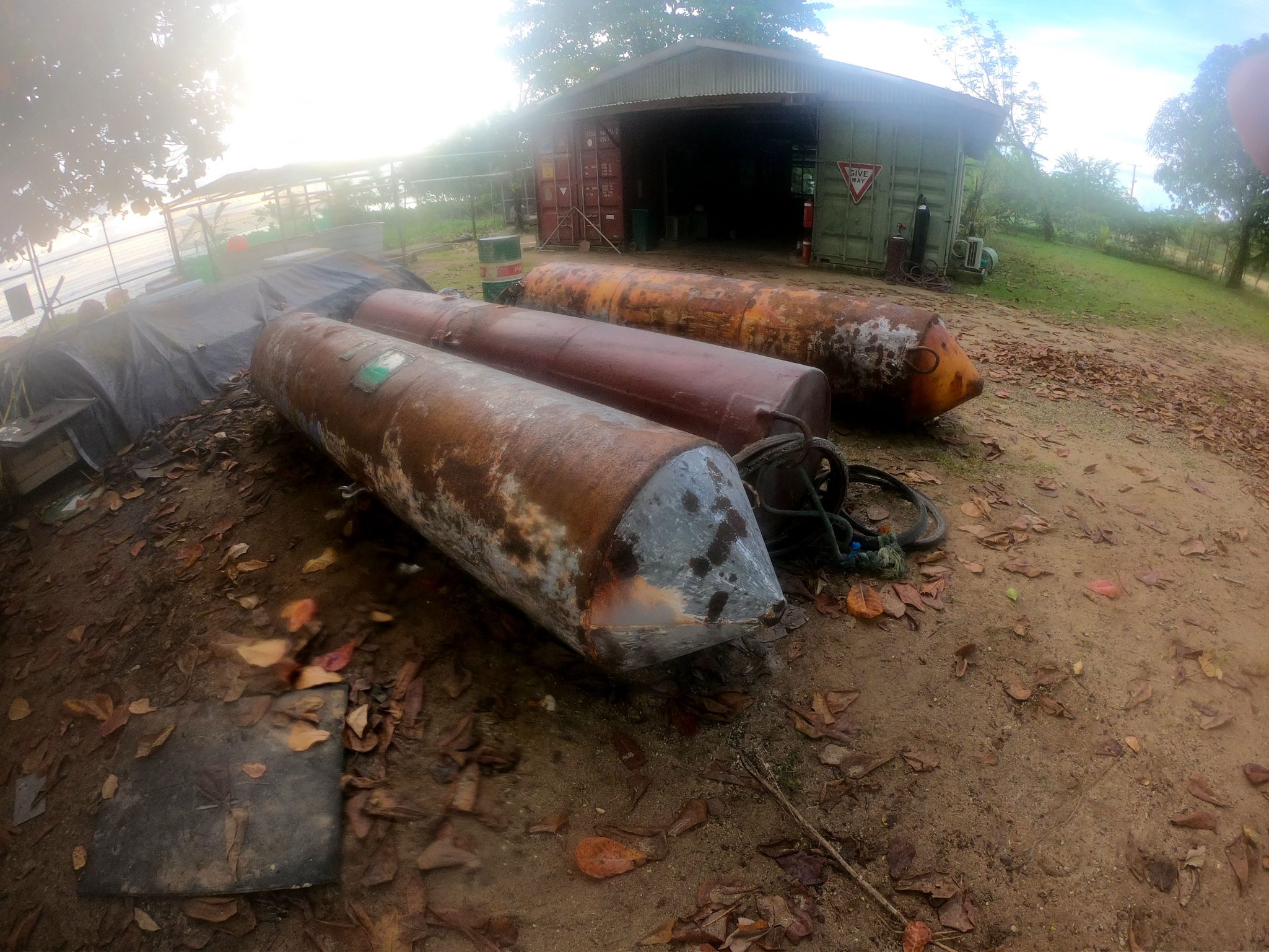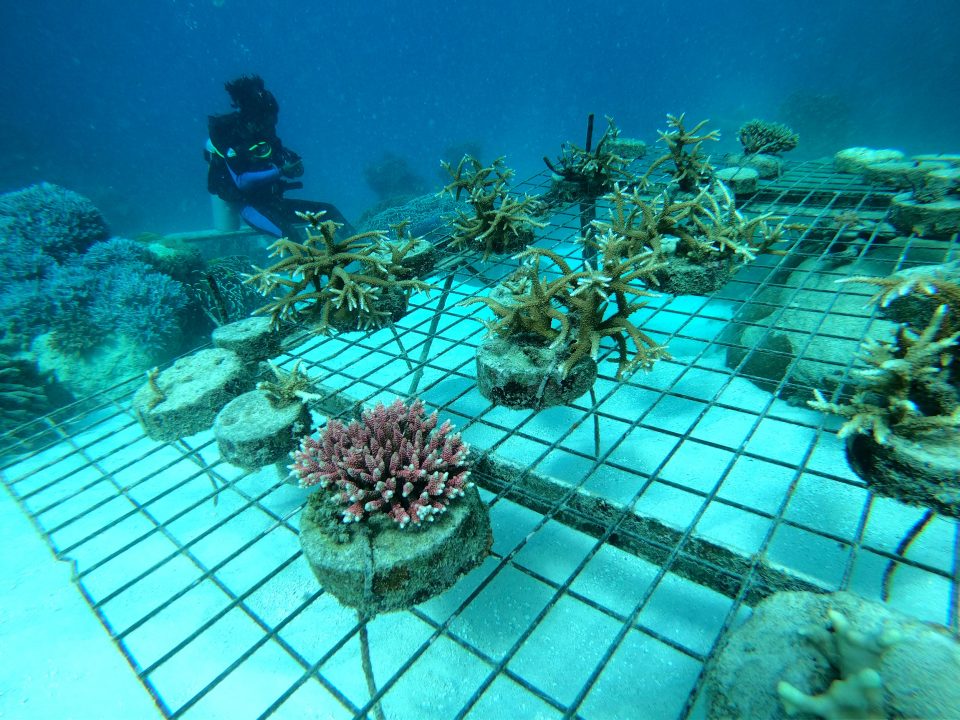St Barbara Simberi Operations in New Ireland Province has introduced coral propagation and replanting of mangrove trees as part of its commitment to looking after the environment and to build stronger communities.
Under the operation’s environment management plan, the Environment Department has been busy ‘gardening’ underwater to propagate corals on the eastern side of the island, to ensure the growth of healthy coral colonies – a natural habitat for fish and other marine species.

According to Fisheries Officer Eric Casper, recycled materials from the mine is used including wires and cement to build coral cookies and tables, which are then placed on the sea floor.

The project began in late 2018 and the team have already relocated cookies to areas in need of new coral gardens.
“It is very satisfying to see new coral growing on the cookies only after a short period,” Mr Casper said.
Meanwhile, much closer to the surface of the sea, 4,500 red mangroves (Rhizophore Mangle) were replanted at the western end of the island last year to replace trees removed to extend the airport runway and those damaged through natural factors. Another 500 mangroves are expected to be planted this year as they are known to provide some of the world’s richest ecosystems, habitats that contribute to increasing biodiversity in the marine environment. As well as this, mangroves also provide communities with timber for building housing structures and help to protect shorelines from wave surges.
Environment Department Superintendent Joshua Lengeto said it would take two years for the mangroves to develop into young adult trees with branches. He added that the rising sea levels was impacting the ecosystem by changing the chemical balance of mangroves which is endangering mangroves in Simberi and elsewhere in the world.

“New trees will help to restore the biodiversity of the mangroves at Simberi and ensure future protection of shorelines and food source,” Mr Lengeto said.
Meanwhile, St Barbara Simberi Operations is currently carrying out preparation work to deploy three Fish Aggregating Devices (FAD) offshore near Simberi, Tatau and Big Tabar islands for the benefit of local fishermen and women.

These FAD are made of permanent structures and are anchored by floaters to lure fish, making it easy for men and women to catch fish for consumption and as a semi-commercial activity to sustain their livelihood.
Officers from the National Fisheries Authority (NFA) in Kavieng will assist the the St Barbara Environment team to commission and install the FAD following NFA and the National Maritime Safety Authority (NMSA) regulatory guidelines.
Environment Manager David Willy said they hoped to complete this project in the first quarter of this year.
General Manager Jason Robertson said St Barbara was committed to helping communities explore the potential for sustainable development in agriculture, fisheries and tourism.
“At St Barbara we are committed to helping our communities thrive, grow and prosper through building meaningful relationships and investing time and energy to ensure local communities are enriched by our presence at Simberi and the wider Tabar group. It is important for our host community to know that we are committed to keeping the environment safe and contributing to their wellbeing,” Mr Robertson said.


